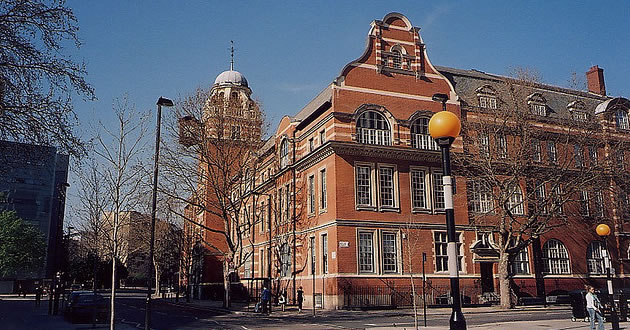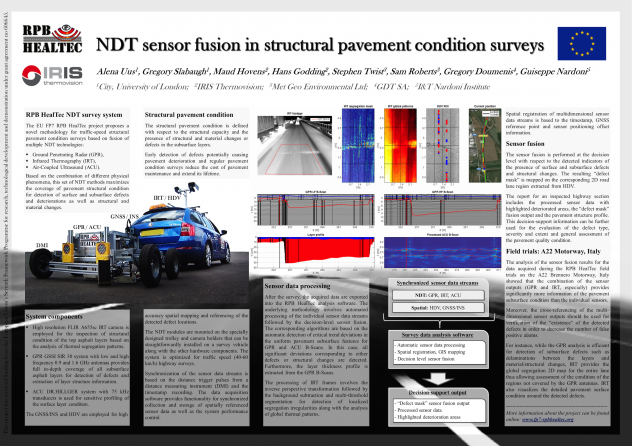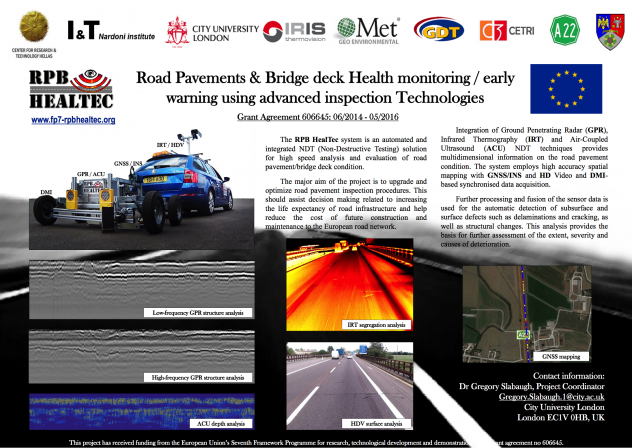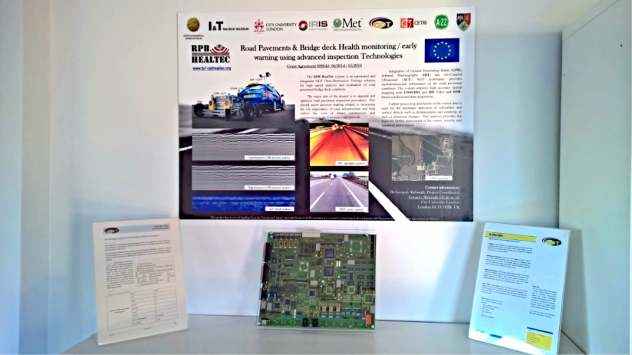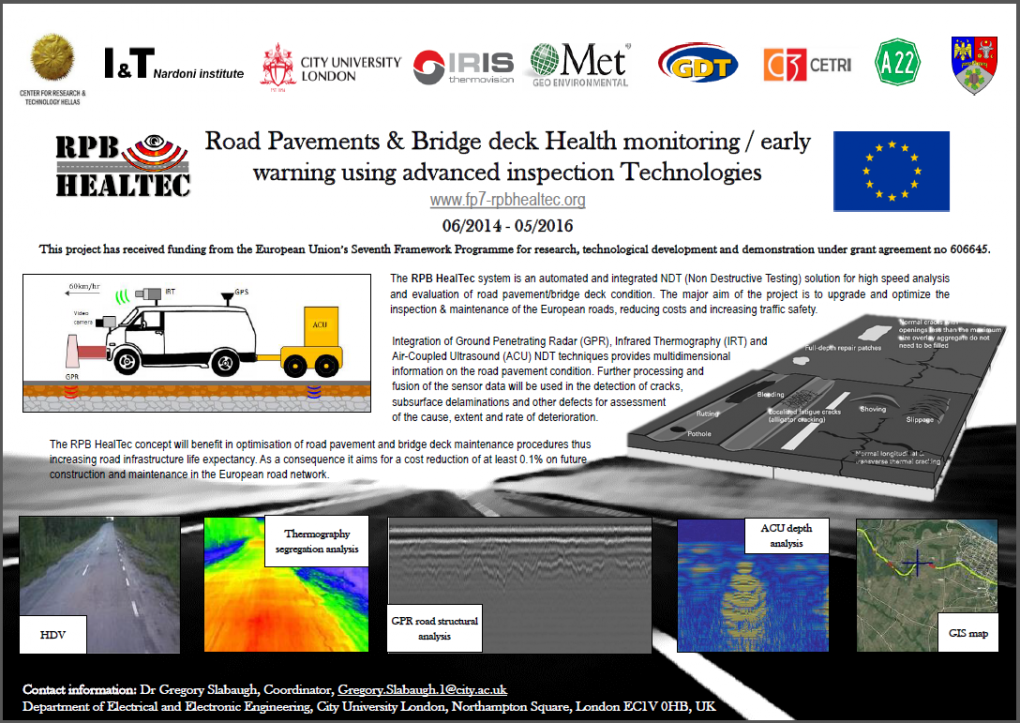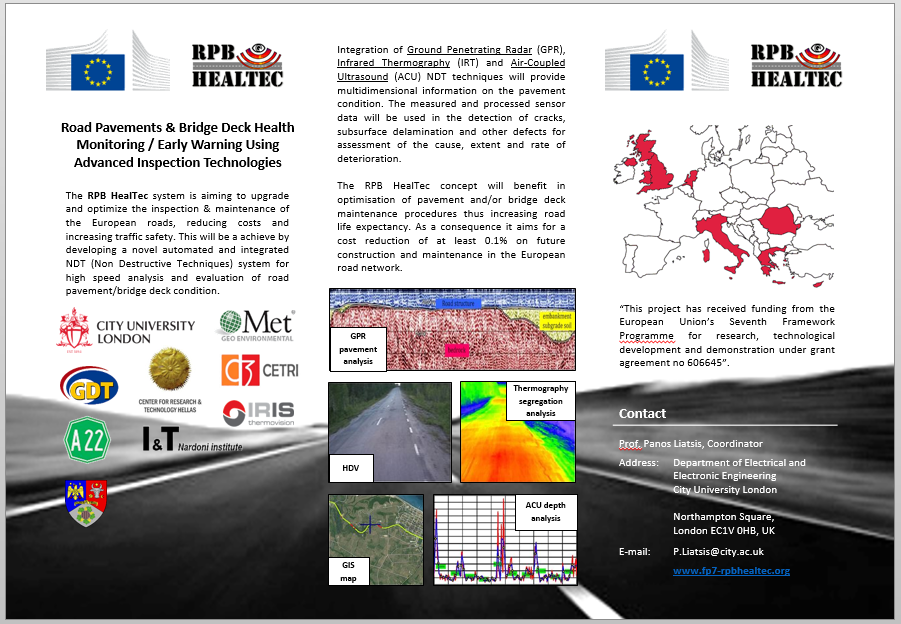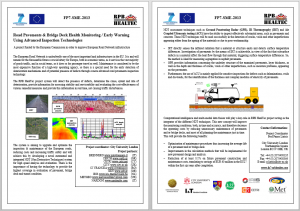The Fifth Technical meeting took place on the 29th of January 2016 and was hosted by CITY, London, UK.
Partners discussed the project progress including the GPR, IRT, HDV, ACU and GPS/INS sensor equipment acquisition (hardware and SDK), the results of laboratory and preliminary field testing, hardware and software level system integration, post-processing software development and dissemination activities along with the organisational questions and further planning for the next 6 months.
At the present stage of the project, the individual NDT sensor modules (WP2-4) were identified and implemented and the WP5-6 teams are working on the system integration involving. For instance, in addition to the power supply, wiring, and central control unit, the hardware integration solution also involves manufacturing of additional holders for protection of the equipment, additional sensors for environmental condition measurement, distance measuring instrument (DMI), etc. The software integration focuses on the development of the software and GUI for synchronized data acquisition and storage and system performance control (i.e., remote sensor control). The post-processing software provides access to the survey data (i.e., synchronized and GIS-mapped sensor output display) and performs data analysis for identification of the road pavement areas that can potentially contain defects or structural changes (both surface and subsurface) based on the decision-level fusion of multidimensional sensor outputs.
The next stage of the project will focus on organisation of the field trials of the integrated solutions followed by further optimization of integrated hardware and software system prototype configuration along with formalization of the plan for dissemination and exploitation activities based on the existing highway maintenance standards and promotion through the trade magazines.
The meeting concluded with an agreement that given the successes achieved so far the next meeting is to be scheduled for the end of March in order to coincide with the field test trials that are going to take place in Athens (CERTH).
